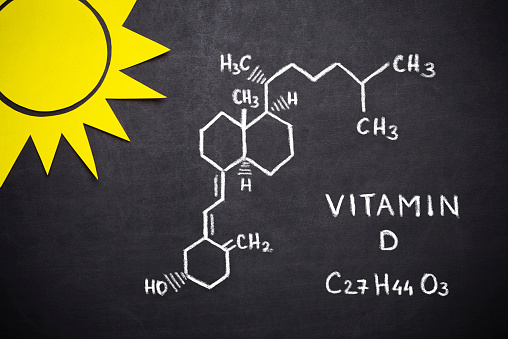Let’s talk about the “Vitamin D3 supplement fad”, a fad that will cause much more damage before it is through. Here are three separate mechanisms from the scientific literature that can cause low 25(OH)D (aka “your Vitamin D level” that’s tested by your doctor), and when corrected, corrects the “low Vitamin D level”:
1. Low calcium levels (in the tissues) cause “low Vitamin D”: http://www.westonaprice.org/…/an-ancestral-perspective-on-…/
Chronic disease and/or living in low-sun-intensity areas often shows with low calcium on a hair test. This DOES NOT mean you should take Vitamin D3, it means you need more UVB exposure (sun or lamps), possibly Vitamin A, and correcting copper issues…and *possibly* more calcium.
2. Low magnesium levels (in the tissues, not blood tests) cause “low Vitamin D”: http://www.ncbi.nlm.nih.gov/pubmed/23981518
Everyone is deficient in magnesium. Everyone. BTW, Natural Calm is a joke and is best used for laxative purposes, and magnesium oxide is hardly fit to give to animals.
3. Chronic inflammation and/or occult/hidden infections causing “low Vitamin D”: http://link.springer.com/article/10.1007%2Fs00011-014-0755-z (the abstract is posted at the end of this post)
Chronic inflammation, the causes are endless. Hidden/occult infections? If you’ve had root canals, however many of those you have had, you have that many infections. That’s a starting point. Feel better in general on antibiotics, especially in ways that you don’t relate to why you were prescribed the antibiotics in the first place? You have a hidden infection(s), they lowered the load for a while, you felt better. Some of the best solutions to help people with getting enough light exposure to help their “calcium-vitamin D” metabolism in the winter months include:
- Safe & smart sun exposure as you are able
- Full-spectrum light bulbs in the home and/or office
- Full-spectrum tanning beds (if you’re into that, must say full-spectrum).
Don’t forget to (hair) test, don’t guess. Even worse is assuming.
Abstract mentioned above following:
“Inflammation and vitamin D: the infection connection Introduction Inflammation is believed to be a contributing factor to many chronic diseases. The influence of vitamin D deficiency on inflammation is being explored but studies have not demonstrated a causative effect. Methods Low serum 25(OH)D is also found in healthy persons exposed to adequate sunlight. Despite increased vitamin D supplementation inflammatory diseases are increasing. The current method of determining vitamin D status may be at fault. The level of 25(OH)D does not always reflect the level of 1,25(OH)2D. Assessment of both metabolites often reveals elevated 1,25(OH)2D, indicating abnormal vitamin D endocrine function. Findings This article reviews vitamin D’s influence on the immune system, examines the myths regarding vitamin D photosynthesis, discusses ways to accurately assess vitamin D status, describes the risks of supplementation, explains the effect of persistent infection on vitamin D metabolism and presents a novel immunotherapy which provides evidence of an infection connection to inflammation. Conclusion Some authorities now believe that low 25(OH)D is a consequence of chronic inflammation rather than the cause. Research points to a bacterial etiology pathogenesis for an inflammatory disease process which results in high 1,25(OH)2D and low 25(OH)D. Immunotherapy, directed at eradicating persistent intracellular pathogens, corrects dysregulated vitamin D metabolism and resolves inflammatory symptoms.”


